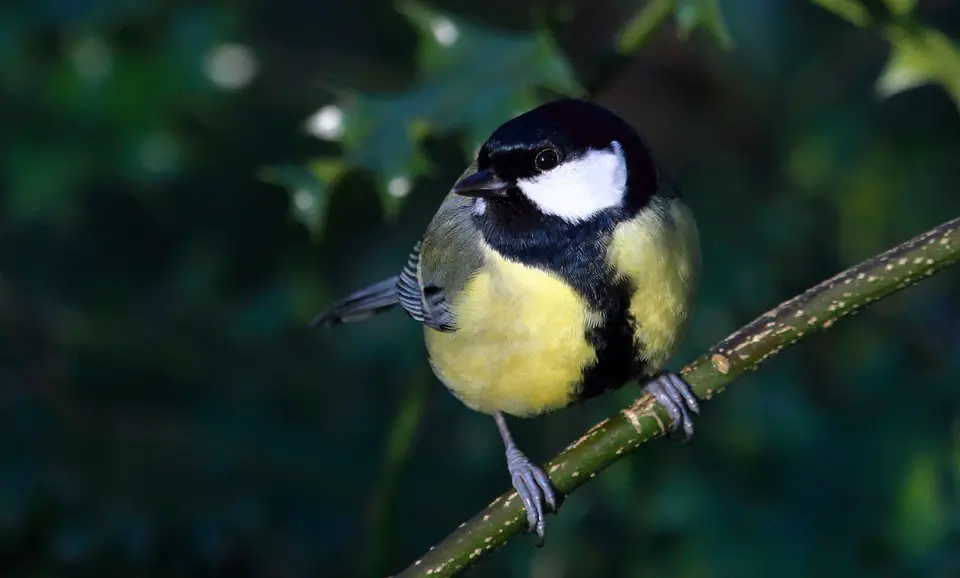Great tits are the largest of the tit family; and probably the cleverest. They are ground feeders; while their relatives the blue tits are swinging acrobatically from hanging feeders, the great tit hovers beneath to quickly hoover up all of the spillages with very little effort.
Although great tits prefer an insect diet in the spring the rest of the year they are happy eating seeds and nuts. Omnivorous birds such as this are usually sedentary. Do great tits migrate or remain near their territory and battle to survive cold winters?

Insectivorous birds are usually migratory. Their natural food sources tend to become scarce in winter, affected by the temperature drop.
Great tits are mostly non-migratory. They don’t need to seek food in warmer climates as they have adapted to visiting bird tables and feeding stations where humans provide enough variety and nutrition to keep them healthy, even during frosts and snow.
Table of Contents
Are ALL great tits non-migratory?
Scandinavian and Canadian great tits need to find a warmer climate if a harsher winter than usual should fall. If they were to remain at home, they would either freeze or starve to death.
The easiest thing to do is to fly into the UK; they know the temperatures are survivable and food is plentiful.
This activity is known as an irruption – a mass influx of birds that wouldn’t normally visit the UK.
It doesn’t happen every year, sometimes only once in ten years. It also coincides with periods when the population of the great tit has expanded, exceeding the amount of available food.
Why British great tits don’t need to migrate
There are 2.5-million great tit territories across the UK, and they are sedentary – resident all year-round.
The main reason that their population is healthy is due to their chosen diet;
- Spring – spiders, flies, insects from leaves (foliage gleaning)
- Autumn and summer – seeds and nuts from deciduous trees and shrubs
- Winter – a mixture of the above, supplemented by seeds, whole peanuts, and sunflower hearts from bird tables.
When one source of food decreases, the great tit moves on to a different food group. They cleverly ensure there is something available during every season, particularly the breeding season when there are young to feed.
During winter it is believed that great tits eat up to 44% of their body weight in sunflower hearts! They are oil-rich and have high calorific value to maintain healthy beaks and coats. Most importantly, fatty foods provide enough energy to keep great tits warm through harsh winter nights.
Final thoughts
Great tits inhabit parks and woodland, but they also happily reside alongside humans.
They rarely move far from their local area; they defend their territory. The birds choose to rely on garden food supplies instead of struggling to find natural food, especially when seasonal changes make their supply erratic.
Great tits don’t migrate from the UK – they don’t need to; the
temperate climate and abundance of people happy to feed the birds make this an inviting and safe place to spend the winter.
